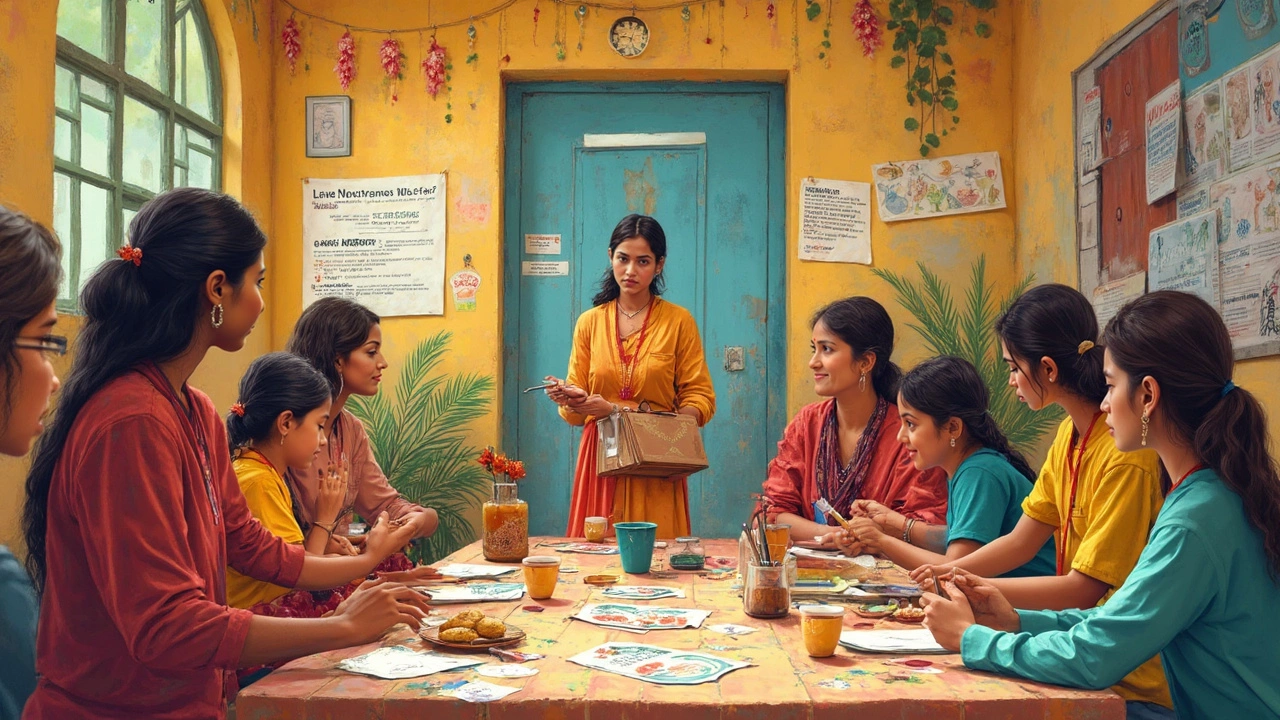A community outreach member doesn’t just shake hands and hand out flyers—they’re the ones making sure no one in the neighborhood gets left behind. Ever wondered who organizes those free health check-up days or food drives? It’s usually someone working behind the scenes as an outreach member. Their job is all about connecting people with services, support, and each other, especially those who usually get overlooked.
It’s not about having a fancy degree or years of experience. What really matters is having heart, patience, and the willingness to listen. If you’re someone who hates seeing people struggle alone, this kind of role might just feel like a natural fit. You don’t wait around—you show up, you check in, and you follow through. You become the person people turn to when they don’t know where else to go.
- Understanding the Role
- Key Skills and Traits
- Common Tasks and Projects
- Tips for Stepping Into Outreach
Understanding the Role
If you’re picturing someone in a suit going door-to-door, think again. A community outreach member works hands-on, getting to know people where they actually are. Their typical day can shift from helping families apply for local food assistance to setting up a blood drive or bringing youth together for after-school programs. They bridge the gap between organizations and the people who need help most—not just with emails and posters, but with real face-to-face chats.
Most outreach members team up with local nonprofits, clinics, or schools. They’re the friendly face at community events but also the voice making sure issues get noticed by those in charge. One well-known fact: in the U.S., around 62 million people volunteer every year, and a good chunk of those hours go to community outreach work—things like offering translation services, signing up folks for health insurance, or helping after a natural disaster.
What sets this gig apart? It isn’t just about passing along information—it’s about being trusted. Community members often reach out to them first with problems, because they know the outreach team won’t just listen—they’ll make things happen. These outreach members get a front-row seat to what’s actually going on and pass honest feedback up to the organizations that can help.
If you’re interested in getting involved, know that community outreach roles are always in demand. The best part: you don’t have to be an expert. It’s about showing up, making connections, and sticking with it. That’s how real change starts.
Key Skills and Traits
Not everyone’s cut out for life as a community outreach member, but the bar isn’t about perfection—it’s about being real with people and showing up when it matters. Folks in these roles juggle a lot, so there are a few core skills you need to lean on.
First, communication is everything. You have to explain resources and programs in plain English, listen to what people actually need, and sometimes deliver tough news with compassion. Active listening isn’t just a nice-to-have—it's the backbone of good outreach. Lots of outreach members also speak a second language, especially in cities where neighbors come from all over the world. Being bilingual or even just knowing a few key phrases helps break down walls fast.
Next, being organized saves the day. Juggling events, tracking client needs, and remembering follow-ups can get messy. Outreach members often use simple spreadsheets or free apps to track who needs what and who’s already gotten help. Check out this at-a-glance take on the top skills:
| Skill | Why It Matters |
|---|---|
| Communication | Keeps info clear and builds trust |
| Empathy | Makes people feel seen and heard |
| Organization | Stops anyone from slipping through the cracks |
| Cultural Sensitivity | Helps connect with folks from all backgrounds |
| Flexibility | Handles surprises and last-minute changes |
Empathy isn’t just a buzzword—without it, people can sense you’re only there to tick boxes. Real change comes from caring about what happens after the first handshake. It’s about building trust and being honest, even when things aren’t perfect. The best outreach members keep showing up, even when it’s tough, because they know that presence matters as much as any resource they hand out.
It also helps to be good with technology. Lots of organizations use email newsletters, social media, or even WhatsApp groups to get the word out. If you’re handy with a smartphone and comfortable sending updates, that’s a huge plus.

Common Tasks and Projects
If you ask a community outreach member what their day looks like, get ready for a whole mix of stuff. It’s never just one job—these folks wear a lot of hats. Most days, they’re out talking with neighbors, checking in on anyone who might need a hand, and making sure folks know about local help like food banks or free clinics. They often work directly with groups—schools, senior centers, or even churches—to get the word out and find the people who need support most.
One big part of the role is pulling together events, like neighborhood clean-ups, health fairs, or classes on things like budgeting or first aid. These aren’t just put on for fun; they’re real lifelines for people who don’t have access to resources otherwise. Some outreach members even design their own small projects if there’s a gap—maybe it’s a drive for winter coats when the weather turns cold, or helping seniors set up online doctor visits. Flexibility is key because needs change all the time.
Check out some typical things a community outreach member tackles week to week:
- Organizing volunteer groups for local events
- Setting up and running food distributions or donation drives
- Helping connect families with housing or legal aid resources
- Creating flyers or making social media posts about community programs
- Visiting neighbors and taking note if someone needs extra support
- Running surveys or having informal chats to find out what the community really wants and needs
Sometimes, the job means crunching a bit of data too. For instance, a quick survey after a free health fair might show how many people got screened or signed up for insurance. Here’s what that might look like in action:
| Event | Attendees | Referrals to Services |
|---|---|---|
| Free Health Clinic | 110 | 47 |
| Back-to-School Drive | 80 | 22 |
| Senior Tech Help | 45 | 15 |
Even small numbers can show the difference a good outreach member makes. They’re often the first point of contact between someone and real, life-changing help. At the end of the day, it’s about making sure no need gets ignored and no one falls through the cracks.
Tips for Stepping Into Outreach
Getting started as a community outreach member isn’t as scary or complicated as it sounds. You don’t need to change your whole life—just start where you are. Here are some real-world tips to make your first steps smoother and actually count.
- Volunteer with groups already making a difference. If you’re not sure where to begin, check local nonprofits, food banks, or neighborhood groups. There’s usually a sign-up sheet, sometimes just a quick online form. Even helping out one Saturday a month is worth it.
- Focus on listening first. The best outreach members spend more time listening than speaking. Learn what people actually need—don’t just guess. Ask your neighbors simple questions: “What’s missing in this area?” or “What would make things better?”
- Use what you know. Got a knack for organizing events? Can you drive folks to appointments? Even posting in a local Facebook group can get the ball rolling. Match your everyday skills with gaps in the community.
- Partner up, don’t go solo. Most outreach member programs run smoother when people work together. If you’re new, tag along with someone experienced. You'll pick up the ropes faster and avoid burnout.
- Take a training or workshop. Plenty of local agencies offer quick training on everything from mental health first aid to best practices for local engagement. These don’t take long and can boost your confidence fast.
To back this up, a report by VolunteerMatch showed that nearly 62% of new volunteers said their first outreach role came from simply talking to a neighbor or friend already involved. That’s proof you don’t need a big resume—just a small connection.
| Step | Action | Impact |
|---|---|---|
| 1 | Attend a local meeting | Builds awareness and trust in the area |
| 2 | Start a conversation with neighbors | Finds out real needs, not guesses |
| 3 | Volunteer for a small job | Gets your feet wet, grows your network |
| 4 | Take free outreach training | Makes you better prepared for challenges |
If you’re still unsure, keep this in mind:
“The most effective outreach starts with showing up and letting your neighbors know you care. You don’t need to have all the answers—just being willing to help makes a huge difference.” — Maria Gutierrez, Community Engagement Director at All Neighbors United
Start small, stay steady, and don’t be afraid to ask questions or admit you’re learning. That’s how nearly every great outreach member starts making a real impact.
